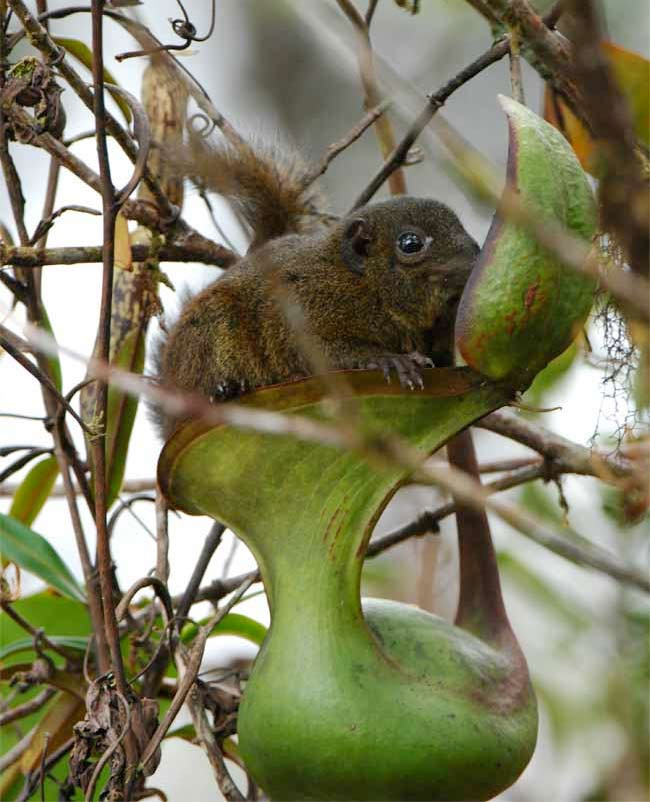Discovered 160 new species in Southeast Asia
The pitcher tree, which provides public sanitation for animals, is one of many newly discovered plant and animal species in Southeast Asia.
Dutch and Malaysian scientists have arrived at Borneo - owned by Malaysia, Indonesia, Brunei and the third largest island on the planet. Their main purpose is to assess the level of biodiversity of Kinabalu, the highest mountain on the island of Borneo, Livescience reported.
The team collected 3,500 DNA samples from more than 1,400 species, including about 160 species of unprecedented scientific circles such as mushrooms, spiders, bugs, snails, ferns, termites.
"It was a successful survey. We collected a lot of samples. In the next phase, we will study the DNA of the samples," Menno Schilthuizen, an expert of the Center for Diversity. study in the Netherlands, speak.
When walking in the jungle in the evening, the team discovered two species of luminescent mushrooms. One of two species may be new to biology.
"Photoluminescent fungus is a rare species. In the daytime, people cannot realize that they are luminescent," commented Luis Morgado, a member of the team.

When mountain shrews eat nectar on the upper part of the leaf-shaped leaf
Warm, it can discharge manure down below. (Photo: Livescience)
Flies with pairs of faces on two long rods are one of the species that makes the expedition feel excited. Many eyes need even longer than their bodies.
"The longer the male fly needs, the more attractive they are in the eyes of the female," said Hans Feijen, a member of the team.
The team also discovered a new species of warm-capped plants.Nepenthes lowii , the name of this plant, only exists on the island of Borneo. They take nitrogen from the droppings of mice and other small animals.
"To get faeces from animals, the plants secrete bile in warm-leaf leaves. When animals climb up trees to lick their bile, they will excrete the fertilizer. The tree will take nitrogen from their manure. strange magic to get nutrients , " Rachel Schwallier, a member of the team, described.
- Discovered new leopard species in Southeast Asia
- Southeast Asia - 'hot spot' extinct
- 139 new species were discovered in the Mekong region
- Floods, droughts will attack Southeast Asia more rapidly
- WWF: Discovered 52 new species in Borneo
- Asians originate from Southeast Asia
- Discover the most beautiful volcanic cave in Southeast Asia
- Southeast Asia is in danger of becoming a world outbreak
- Southeast Asia has a high rate of arsenic poisoning in the country
- Typhoon attacks on Southeast Asia are getting stronger
- Southeast Asia is vulnerable to hackers
- Southeast Asia should learn Chinese technology strategy
 Vietnam 5th Asian champion on fuel-efficient vehicles
Vietnam 5th Asian champion on fuel-efficient vehicles We can read all NASA studies completely free of charge
We can read all NASA studies completely free of charge Singer and songwriter Bob Dylan won the 2016 Nobel Prize for Literature
Singer and songwriter Bob Dylan won the 2016 Nobel Prize for Literature Scientific revolution in Asia
Scientific revolution in Asia